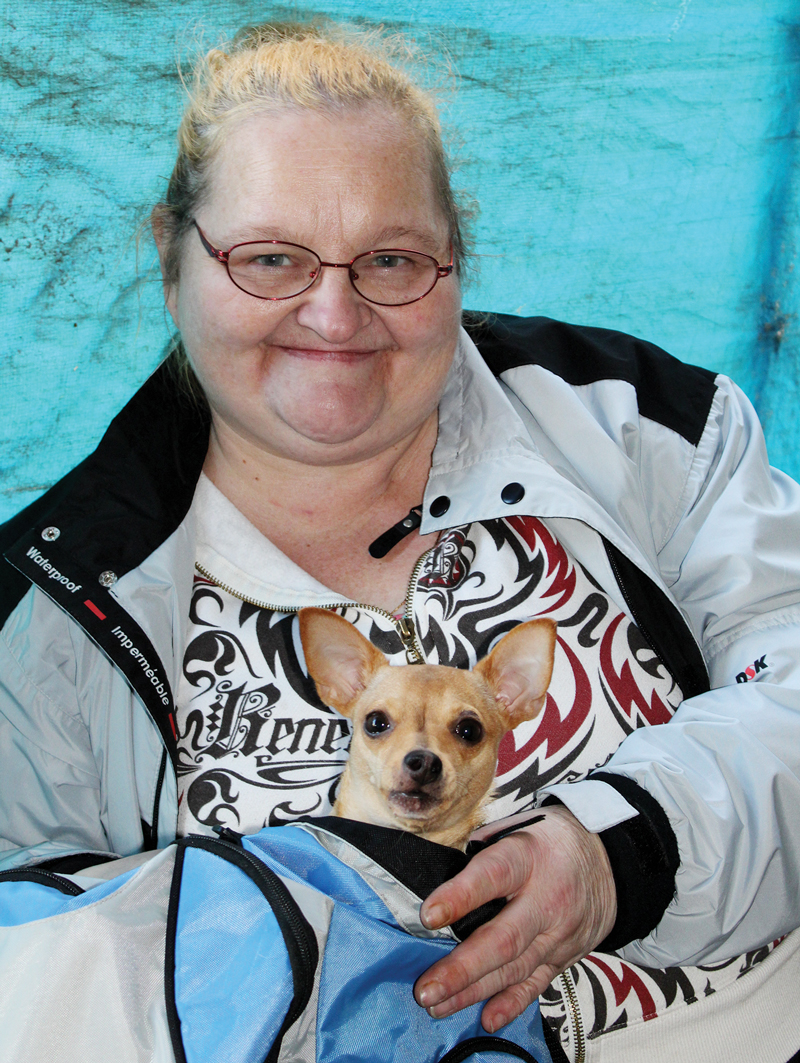In Abbotsford, B.C., The Salvation Army’s Centre of Hope offers a place of shelter and safety, not only for people without a home, but also their animals. Since becoming a “pet-friendly” shelter in October 2014, they’ve welcomed dogs, cats, rabbits, birds—even a lizard and a tarantula.
“We opened the door to pets because we found ourselves turning people away,” says Al Breitkreuz, program manager, shelter, outreach and family services. “For some people, a pet is an important part of their survival, something that keeps them going. They shouldn’t have to give that up so they can sleep indoors.”
Mary (not her real name) is an elderly woman with the onset of dementia. “She’s had her Shih Tzu, Daisy, for 14 years. She needs this little dog,” says Breitkreuz. “If there was no petfriendly shelter available, where would she go?”
Along with meeting an immediate need, the shelter provides access to vital resources for those in the midst of challenging circumstances. After identifying this barrier to service, shelter staff considered the practical questions involved in having animals in the building. Were there health and safety concerns? What about noise? Could they keep the shelter clean?
“We came up with a policy to address these issues, and all pet owners are asked to sign a contract outlining their expectations and responsibilities,” he says. “Ultimately, the owner is accountable for the actions and behaviour of their pet.”
The shelter allows two fur-bearing animals at one time. Owners are responsible to feed, walk and clean up after their pet, keep them under control at all times and be respectful of others in the community, as well as local bylaws.
At night, pets sleep outside in a large kennel, with an insulated doghouse, donated by Petcetera. During the day, they can be inside with their owner, but must wear a leash— and possibly a muzzle—when in common areas. Pets aren’t permitted in the kitchen or dining room, unless they are service animals.
“On one hand, pets are a bit of extra work, but on the other hand, they also make our lives easier—it goes both ways,” says Breitkreuz. “Research suggests that the presence of pets in a shelter can bring equilibrium. When clients are sitting around in the evening, watching TV, and there’s a dog at their feet—that’s a beautiful thing. Everyone loves that.”
On rare occasions, shelter staff have felt an animal was being mistreated and called the SPCA. “But for the most part, there’s such a positive, caring bond,” he says.
Although having a pet can make it more difficult to find housing, this bond helps. “The responsibility that comes with owning and taking care of a pet provides so much balance in a person’s life,” he says. “It gives them the motivation to get housed. We’ve found that our housing rate is actually higher for people with pets than people without.”
Breitkreuz recommends that other Salvation Army shelters consider becoming pet-friendly. “Our mission is to meet the needs of as many people as we possibly can, and for the most part, this entire project is working well,” he says. “There may be reasons why some shelters can’t, but if it’s just because you’re afraid of the mess, then you need to look into the benefits, because it’s worth it.”
Photo: Giselle Randall










Comment
On Friday, December 27, 2019, Charlotte said:
Leave a Comment